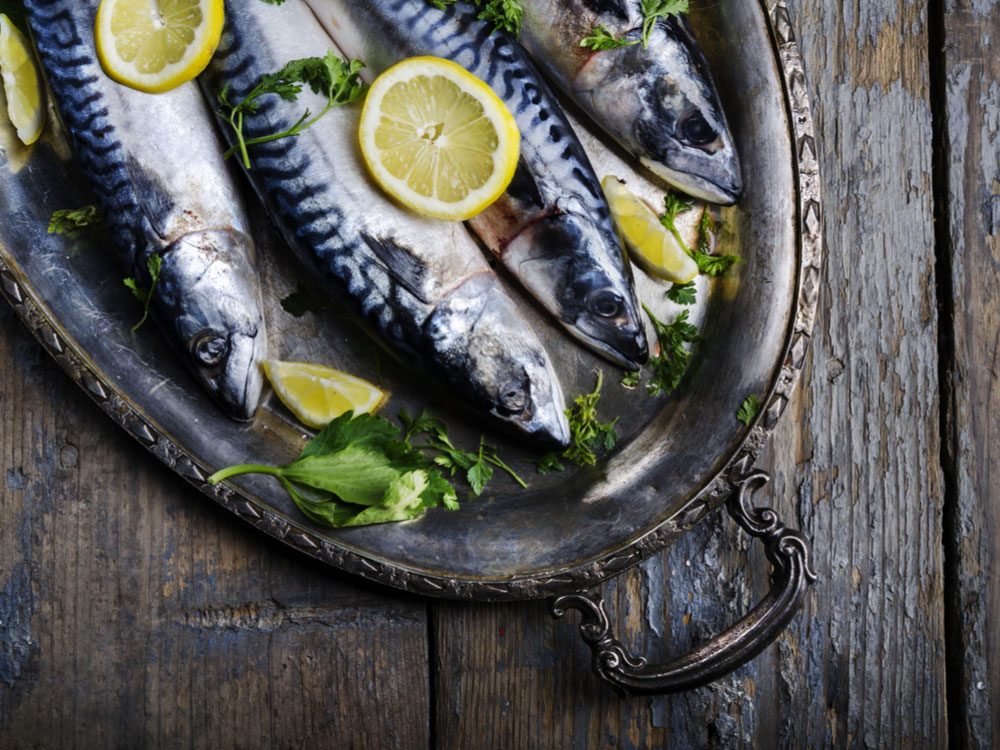
This Volunteer Story Will Warm Your Heart and Whet Your Appetite
On a warm summer Monday in July, a few weeks after Ramadan has ended, a diminutive 69-year-old woman dressed in yellow florals and a purple plaid apron stands in front of two giant soup pots. “Brother Kalil,” she says, wielding a massive wooden spoon, “it’s time to add the milk!”
Sabariah Binti Hussein, known by most as Sister Sabria, hums with energy. Today she and her volunteer team of eight have gathered on the top floor of a residential building in Montreal’s Notre-Dame-de-Grâce neighbourhood to prepare corn soup, baked potatoes and phyllo pastry stuffed with ground beef to take to the nearby River’s Edge Church community kitchen.
By 3 p.m. things are in full swing. Kalil Sackobah, 26, is helping Hussein make the soup in the apartment where she lives with her husband. The space, warm and inviting, is filled with plants and aquariums that house comet goldfish and African cichlids and bubble away in tandem with the pots on the stove. Down the hall, in two apartments that provide shelter for community members in need, other volunteers work on the balance of the dinner. (This Montreal optician is providing affordable eye care to those in need.)
Hussein prepares meals for River’s Edge every Monday, something she’s been doing for several years. On Tuesdays and Wednesdays she visits sick friends in the hospital and helps families at loose ends. On Thursdays she cooks food to sell at mosques on Fridays. The money she makes, along with community donations, allows her to fund her shelter and feed the community. While she’s just emerged from her busy period—she spends the month of Ramadan cooking food to supply for iftar, the post-sunset meal that breaks the fast—she doesn’t seem to have slowed down much.
“In Islam,” she explains, “there is a Hadith that says before you sleep, check if your neighbour is hungry. For me, the church people, the surrounding area, they are my neighbours. So I check whether they are hungry.” (This Facebook group is making Toronto safer for everyone.)
When she arrived in Montreal from Malaysia over 30 years ago, she says, the city’s pluralism reminded her of her home country—people of all different racial, religious and ethnic backgrounds living side by side.
Once the soup is simmering away, Sackobah takes his camera out of his backpack and begins to snap photos. Hussein’s long-term goal is to open a home for orphans of the Rohingya people, a Muslim minority group fleeing persecution in Myanmar. She is preparing to speak at a fundraising dinner in Ottawa, held by the Muslim charity Human Concern International, to raise money for the project. A previous fundraiser netted $16,000, leaving her with $134,000 left to collect. Sackobah’s photos will help bring attention to the cause.
The aquariums throughout Hussein’s apartment remind her of growing up by the ocean. When she needs a break from her volunteer work, she rests on the couch next to her goldfish. “I just lay down here and take a little nap,” she says. “It’s very relaxing.” (These great Canadians are making an impact in Canada and beyond.)
But there’s no time for a breather today: as soon as the food is ready, Shiao-Lan Pan arrives from the church to help haul it to the community kitchen. Pan, who has known Hussein for more than five years, says she once asked her what it meant to be Muslim and serve food at a Christian church. “Sister Sabria said, ‘You’re my brother, you’re my sister,’” Pan says. “Her generosity, and what she believes, transcend the boundaries of religion and culture.”
Bob L., who attends dinners at the church, agrees. “She’s got a heart like a saint,” he says.
At River’s Edge, about 70 people are waiting for their dinner. Hussein and her volunteer crew hop into action, joining church volunteers and kitchen coordinators Rob and Heather Aitken to prepare plates.
“Sister Sabria’s a great cook,” Heather says. “People enjoy her food.”
“She’s a blessing,” Rob adds.
Check out more extraordinary real life stories about the kindness of strangers!

Could you be lowering your fertility without even realizing it?
Got a headache? Take an ibuprofen. Sore muscles? Pop a painkiller. But if you take a daily dose of ibuprofen, we have some bad news: All of those pills can add up. They might increase your risk of heart attacks and cause muscle weakness, for starters. Now, new research shows that ibuprofen can damage fertility, too.
According to a new study published in Proceedings of the National Academy of Sciences, men who take this popular pain reliever over a long period of time might be more likely to develop a health condition called compensated hypogonadism, which could reduce their fertility.
For the study, 31 men between the ages of 18 and 35 took 600 milligrams (three tablets) a day of ibuprofen for six weeks. Other volunteers received a placebo drug. Then, a team of researchers from Denmark and France monitored the participants for two weeks.
By the end of the study, all of the volunteers showed higher levels of luteinizing hormones, which prevented certain cells in their testicles from producing testosterone. The researchers also found that participants’ pituitary glands were producing more of another hormone that encouraged their bodies to produce more testosterone.
While the combination of these two responses kept the participants’ overall testosterone levels constant, the changes still overworked their bodies, causing compensated hypogonadism. This condition can cause a temporary reduction in the production of sperm cells in men, reducing their fertility. (Here are 13 more things your urologist wants you to know.)
But hold up—you might not want to toss those painkillers just yet. It’s likely that the average ibuprofen user won’t experience any negative side effects to their fertility; on the other hand, regularly using the drug for long periods of time could be cause for concern, researchers say. Still, it can’t hurt to cut back on the pills in the meantime, regardless of your normal dose—at least until further studies are done.
Concerned about your baby-making ability? Here’s what you can do to boost your fertility.
[Source: MedicalXpress]

Looking for ways to ward off memory loss?
Maybe you pop vitamins supporting brainpower, or stock up on these foods that boost brain health. But new guidelines from the American Academy of Neurology suggest there’s something better you can do to keep your mind sharp.
A quarter of adults aged 80 to 84 experience mild cognitive impairment, according to AAN. To address the widespread problem, a group of neurologists and Alzheimer’s specialists went through existing studies to pin down the best ways to prevent and treat cognitive decline—and you might be surprised by what they included and what they didn’t.
Surprisingly, the AAN guidelines don’t include any medication or dietary recommendations. The authors stress that there haven’t been any high-quality, long-term studies finding foods or medication can help cognitive decline.
The guidelines also say doctors can consider suggesting cognitive training to patients with memory loss but not to rely on it. So far, the report authors say the evidence is too inconclusive to say for sure if brain exercises, like memory and attention training or problem-solving for everyday issues associated with memory loss, are beneficial. Still, these brain exercises can’t do any harm.
But there was one big takeaway from the new guidelines: Exercising just twice a week could improve cognitive decline. One study showed adults with mild cognitive impairment who did resistance training twice a week scored better on executive function and associative memory tests than a group that worked on balancing, stretching, and relaxing.
What’s more, another study had older adults attend either biweekly health classes or sessions of aerobics, strength training, balance exercises, and multitasking training. Six months later, the ones who’d exercised regularly scored better on cognitive health and memory tests, plus had less brain shrinkage.
AAN now recommends doctors tell patients with memory loss to exercise twice a week to keep their minds sharp. Looks like you’ve got just one more reason to clear time in your schedule for a workout—even if it’s only on the weekends. (Still need convincing? Here are 10 ways to workout when you have absolutely no time.)
Find out what exciting new research says about treating Alzheimer’s patients.
[Source: ScienceDaily]

Is Queen Elizabeth II the World’s Most Famous Introvert?
The Queen has only given one interview while a sovereign. Her true personality remains elusive to the public. However, one thing is clear: Queen Elizabeth is an introvert, or at the very least, an ambivert. (This is the rarest personality type in the world, however!)
Introverts prefer quiet environments and feel energized from spending time alone or with people they know well. They aren’t necessarily shy, but they do tend to be more reserved and guarded with strangers. Fellow introverts will appreciate how draining an average day for Her Majesty must be.
Fortunately, the Queen has some tricks to make public engagements easier. Just like us commoners rely on friends to save us from awkward situations or boring conversations, she subtly signals to her staff when she wants an intervention. If she places her handbag on the table, it indicates that she wants the event to end in the next five minutes. For more urgent situations, putting her bag on the floor shows that she wants her lady-in-waiting to rescue her immediately. Don’t miss these other fascinating facts about Queen Elizabeth.
Most comfortable in the countryside, the Queen has a well-known passion for horses and dogs. There is a scene in the hit Netflix show The Crown which reveals a fascinating side of the monarch. While giving Jackie Kennedy a personal tour of Buckingham Palace, the two women find themselves bonding over their respective positions as introverted women who have found themselves in the limelight. Surrounded by the Queen’s beloved corgis, both women admit they are happiest around animals and that their extroverted sisters would have been much better suited to their public roles.
In real life, the Queen has confessed she relies on the company of her corgis. Not only do they offer unconditional love, but they also serve as a way for her to break the ice with strangers. Walking them on the grounds of her palaces gives her time alone for the introspection that is essential to an introvert’s mental health.
Introverts take time to process their thoughts—a useful trait for someone who has the added pressure of remaining politically neutral at all times. Behind the scenes, those closest to the Queen say that she is warm and friendly. As well as being a loving mother and grandmother, she’s a loyal friend with a wicked sense of humour to rival her extroverted husband’s. (Speaking of which, Prince Philip’s pet name for Queen Elizabeth will melt your heart!)
[Source: Telegraph, Vanity Fair]

The Real Reason Why Stephen Hawking Outlived ALS By 55 Years
On March 14, 2018, the world mourned the loss of Cambridge professor Stephen W. Hawking, PhD. Perhaps the most remarkable part of his passing was the fact that he was 76 years old—he wasn’t supposed to live past 23. Surviving the next 55 years took constant care, determination, and—though it seems strange to say it—incredible luck.
In 1963, Dr. Hawking was a promising doctoral student at the University of Cambridge when he developed unusual clumsiness. He fell down a flight of stairs, according to author Kitty Ferguson’s biography, Stephen Hawking: An Unfettered Mind, and his speech began to slur. His doctors diagnosed him with amyotrophic lateral sclerosis—ALS, which is also known as Lou Gehrig’s disease. The prognosis: He had two years to live.
How did Dr. Hawking escape this death sentence? This is where chance creeps in: Although within a couple of years his speech was nearly unintelligible and he couldn’t walk without assistance, Dr. Hawking nonetheless had an extremely slow-growing form of the disease. “Two to five years—that is the common prognosis for ALS,” Lucie Bruijn, PhD, MBA, chief scientist for the ALS Association told Reader’s Digest. Only 10 per cent of patients survive for more than ten years. “I was just at a big meeting with colleagues, and no one had ever seen such a case,” says Dr. Bruijn, “Only one clinician there had a patient that survived 20 years.” Leo McCluskey, MD, associate professor of Neurology at the University of Pennsylvania, told Scientific American that slow-growing forms of ALS occur in “less than a few per cent” of patients.
One of the mysteries of ALS is how it will progress, explains Dr. McCluskey. The condition attacks your muscle control centers—your motor neurons. There are two sets—higher motor neurons in the frontal lobe of your brain and lower motor neurons in the spine. The disease can knock out the higher group, the lower, or both. Dr. Bruijn points out that ALS may also damage other parts of the brain, leading to dementia. (Here are 8 genius habits your 80-year-old brain will thank you for doing today.)
ALS kills by disabling the muscles that help you breathe and swallow, which is why good care is so crucial to a patient’s survival, points out Dr. Bruijn—and it played a key role in Dr. Hawking’s story. On a 1985 trip to the CERN laboratory in Switzerland, Dr. Hawking contracted severe pneumonia (a common risk for ALS patients). He became so ill that doctors recommended stopping life support; his wife refused. Instead, the staff doubled down on his care: After a tracheotomy and around-the-clock nursing, Dr. Hawking recovered.
Dr. Bruijn points to research in Europe demonstrating that patients live longer and fare better when they get medical help tailored to ALS. “The care he received and the technology he was able to take advantage of—the motorized wheelchair, the communication system—helped Dr. Hawking continue his research and engagement in life.” She speculates that his active life may have, in turn, contributed to his longevity. (Learn how the power of positive thinking can also help you live longer.)
“Dr. Hawking was a global icon for his intellect, and also because he continued to live a vibrant life with ALS,” she says.
Check out Stephen Hawking’s 1984 interview with Reader’s Digest here.

You’ve probably seen them scores of times: the familiar golden arches, adorning McDonald’s restaurants throughout the world. Often looming high over the restaurant itself, the arches form the giant “M” for “McDonald’s.” But if you believe Louis Cheskin, a design consultant for McDonald’s in the 1960s, the arches aren’t just alphabetical… they’re also anatomical. (Here are 10 things you need to know about advertising.)
As popular as the logo is today, McDonald’s executives almost got rid of the Golden Arches in the 1960s. Their saviour? Design consultant Louis Cheskin, whom the McDonald’s firm hired. Cheskin was apparently a fan of the teachings of Sigmund Freud, and sure enough, he insisted that the arches had a Freudian double meaning. He claimed that the shape of the arches subconsciously reminds people of… a giant set of boobs. He used the old “sex-sells” argument to claim that the logo was subconsciously drawing people to McDonald’s. According to the book Fast Food Nation: The Dark Side of the All-American Meal, Cheskin said that the arches symbolize “mother McDonald’s breasts.” This “maternal” aspect of the logo supposedly encouraged people to eat McDonald’s rather than a home-cooked meal. And to that, we say… buddy, are you sure it’s not just an M? (Here are the world’s most contagious myths and misconceptions—debunked.)
Obviously, though, this bizarre explanation worked, because the golden arches did not meet their end in the 1960s.
So, what do you think? Do you see it, or do you think that one dude in the ’60s just had a dirty mind?
Next, check out 10 Secret, Quirky Messages in Company Logos You See All the Time!
[Sources: qz.com, HighBeam, Cosmopolitan]

Think about it: How do you and your partner wind down before hitting the hay? Do you read a book? Watch a TV show? Scroll through your phones? Beware—you might not be practicing the best habits for getting a great night’s sleep. Fortunately, new research suggests one (fun!) addition to your bedtime routine: having sex.
In a recent survey of 460 adults between the ages of 18 and 70, around 64 per cent of respondents slept better when they had sex with their partners before falling asleep. But here’s the catch: Your quality of sleep gets a major boost when both parties have an orgasm.
Why does sex lead to a better snooze? “When you’re engaging in sex, you’re not thinking about what to do the next day, you’re not going through your phones. It distracts you,” Adelaide sleep researcher Dr. Michele Lastella told Adelaide Now. (Science reveals the reasons you should be having more sex.)
The way sex improves your sleep quality might be gender-specific, too. “For women, estrogen levels increase after sex, which can enhance a woman’s REM cycle for a deeper sleep. In men, the hormone prolactin is secreted after orgasm and has been tied to sleepiness,” licensed psychologist Rachel Needle, co-director of the Modern Sex Therapy Institutes, told CNN.
You’ve never had a better excuse to spice up your sex life—and your bedtime routine.
This is exactly how long women want sex to last.

Can’t Fall Asleep? Try This One Food!
Good news for people looking to sleep better and boost their IQ—a new study published by the University of Pennsylvania says that regular fish consumption has been shown to improve cognition and help people fall asleep. They also found that children who consume fish at least weekly fall asleep better and have higher IQs by nearly five points. (These 10 seafood facts will change how you eat fish forever.)
Fish are loaded with omega-3 fatty acids—a fat that carries numerous health benefits. “Neurons need omega-3 fatty acids for proper cell membrane structure and function,” explains Don Vaughn, MD, a neuroscientist at UCLA, of the importance of a fish-inclusive diet. “It then comes as no surprise that a dietary insufficiency of omega-3 fatty acids leads to cognitive deficits.”
While previous studies showed a relationship between omega-3 consumption and improved intelligence, none had established a link between improved sleep, intelligence, and fish consumption. The new study recruited 541 children in China, almost evenly split between boys and girls. The researchers tracked fish consumption along with the kids’ performance on both verbal and non-verbal skill tests such as vocabulary and coding. Parents helped log how well the kids slept. After all the data was collected and analyzed, the Penn researchers found that children who reported eating fish at least weekly scored 4.8 points higher on their IQ exams than those who reported eating fish “seldom” or “never.” Those who ate fish regularly also slept sounder.
“Sleep is essential to brain health and function. The brain consolidates important memories, forgets useless information, and continues practicing skills learned during the day,” says Dr. Vaughn. “Good sleep underlies high performance in memory and problem solving.”
The researchers on the team also noted that poor sleep is often accompanied by antisocial behaviour, poor cognition, and a variety of other problems—all of which could be lessened by increasing the amount of fish or omega-3 fatty acids in their diet.
“It is clear that omega-3 fatty acids affect brain structure and performance,” says Dr. Vaughn. “We don’t know the ‘right’ amount of consumption so it’s certainly plausible that increased omega-3 dietary intake might lead to small improvements in cognition, with improved sleep as a mediating factor.”
Check out 30 Painless Ways to Increase Dietary Fibre!

Get Better at Saving Money with Just a $5 Bill
Saving money can be tough, especially if you’re one of the many Canadians who’s getting bled dry by these common spending mistakes. Sudden expenses come up out of nowhere, and whether it’s an unexpected medical bill, a sudden repair needed for your car, or a sudden need to buy a luxury dog seat cover for said car, you just might have to wipe away all your progress. (If that’s the case, better read up on Milos Raonic’s secret to saving money like a pro.)
But one college professor has come up with a genius trick which might just turn your savings woe into a savings “Woah! Look at all this money I have!” Marie Franklin simply takes every five dollar bill she encounters and puts it away.
In her blog post on the topic, Franklin explains that the simple trick helped her save “almost $40,000 since beginning the practice 13 years ago.” It all started when Franklin had to be a bit tighter with her cash when her daughters were going through college and opted to start sliding every five dollar bill she encountered into a different pocket of her wallet. (Here are four easy back-to-school money saving tips.)
Jo Kelly, the CMO of UBank, spoke to the New York Post about how this basic banking method could really simplify saving.
What makes it so achievable is the simplicity,” Kelly explains. “Anyone, anywhere can start building their savings using this trick. There’s no need to set up new accounts or develop complicated budgets—you can start with the money that is already in your wallet.”
So, for the retirement-fund challenged millennials, this may be a good reason to eschew the ATM for once and carry some cash.
Check out 15 Surprisingly Frugal Habits of the British Royal Family.